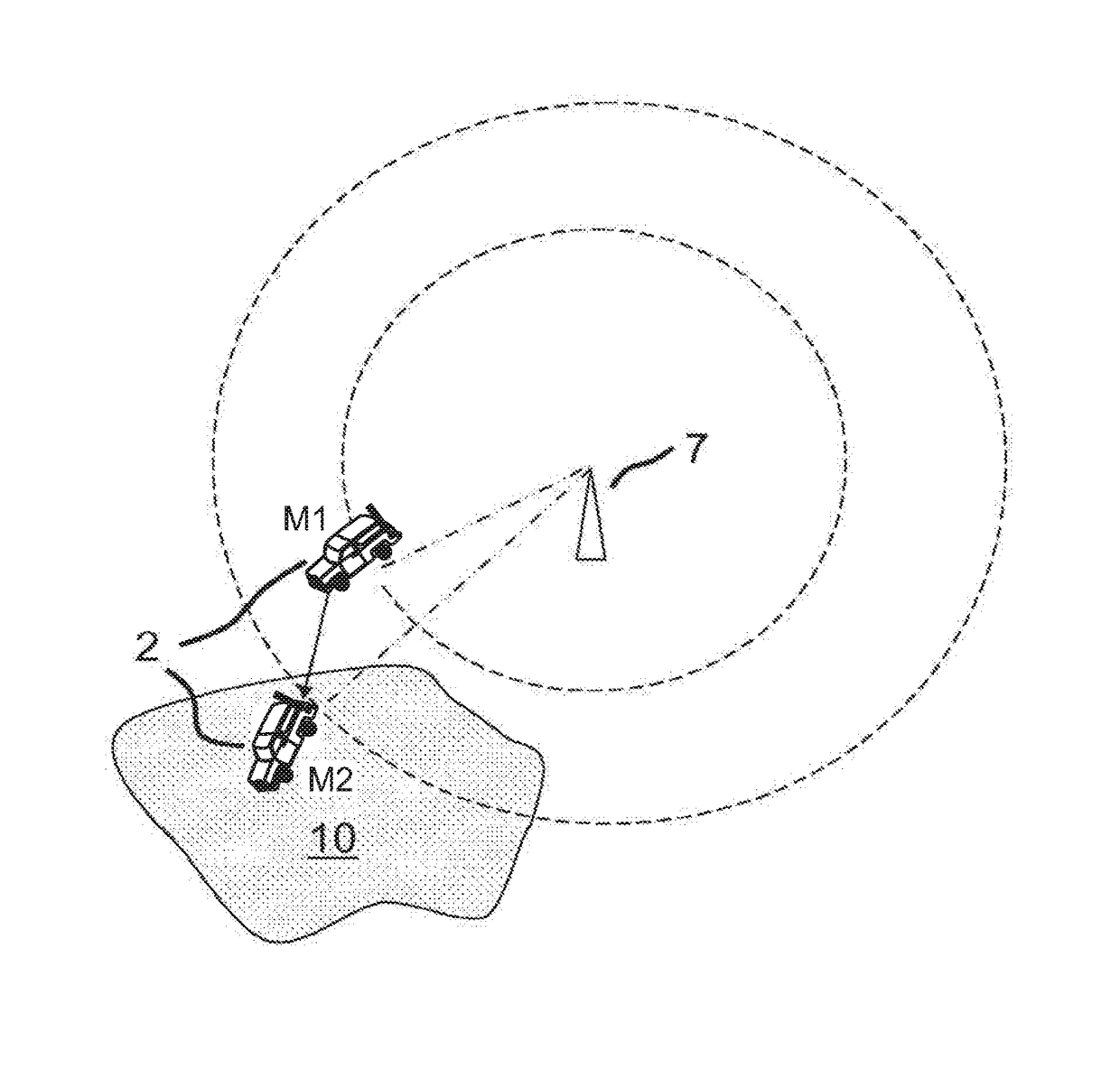Radio positioning of a mobile receiver using a virtual positioning reference
a mobile receiver and virtual positioning technology, applied in vehicle position/course/altitude control, process and machine control, instruments, etc., can solve the problems of inability to calculate transmitter clock offset a and local clock error c values, and the inability to synchronize the available terrestrial radio signal transmitters. to achieve the effect of reducing physical circuitry, improving localization, and reducing the complexity of the guidance system
- Summary
- Abstract
- Description
- Claims
- Application Information
AI Technical Summary
Benefits of technology
Problems solved by technology
Method used
Image
Examples
Embodiment Construction
[0103]Referring to FIG. 1 there is schematically shown a guidance system for an autonomous vehicle 2 according to a first embodiment of the present invention. The guidance system includes a primary positioning resource in the form of a GPS receiver 20, a terrestrial radio signal receiver 22, an Inertial Measurement Unit (IMU) 24, an interface module 26, a database 28, a general purpose processor 30, a user interface module 32, a vehicle control module 34 and a secondary processor 35 in the form of a differential positioning module dedicated to performing differential timing and distance calculations. The autonomous vehicle 2 is also equipped with a clock incorporated as part of the processor 30.
[0104]The GPS receiver 20 and terrestrial receiver 22 collect data from respective GPS and terrestrial radio signals as is known in the art, and send their data to the processor 30. The processor 30 also receives data from the IMU 24, and optionally, the interface module 26. The interface mod...
PUM
 Login to View More
Login to View More Abstract
Description
Claims
Application Information
 Login to View More
Login to View More - R&D
- Intellectual Property
- Life Sciences
- Materials
- Tech Scout
- Unparalleled Data Quality
- Higher Quality Content
- 60% Fewer Hallucinations
Browse by: Latest US Patents, China's latest patents, Technical Efficacy Thesaurus, Application Domain, Technology Topic, Popular Technical Reports.
© 2025 PatSnap. All rights reserved.Legal|Privacy policy|Modern Slavery Act Transparency Statement|Sitemap|About US| Contact US: help@patsnap.com



